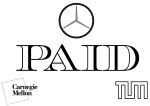

|
PAID
Platform for Active Information Dissemination |
|||
|
The major information sources today are service, parts, and vehicle documentation. Depending on the type of information the company utilizes a variety of different distribution channels for aftersales information but primarily a set of CD-ROM's which are assembled and sent to the dealerships on a monthly basis. This distribution method is very reliable but also very slow and inefficient. The amount of aftersales information is increasing due to the introduction of new aftersales information systems and the the introduction of new models. The main focus of the PAID project was to develop a software architecture complying to the Daimler-Benz IT infrastructure and IT environment. This architecture was supposed to
The PAID architecture was successfully implemented as a prototype. | |||
| Project phases | |||
The PAID project had four distinct phases:
The PAID project has been finished in January 2000. Documentation is no longer maintained; links to old information can be found here. | |||
| Cooperations | |||
|
|||